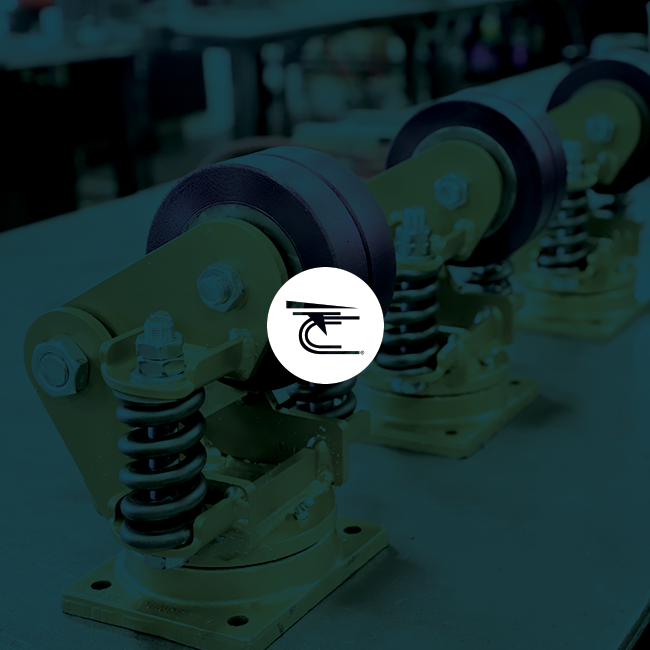

For decades, forklifts have been the heroes of the manufacturing plant. It’s hard to think of any production facility that hasn’t deployed these powered machines in one aspect of its manufacturing process.
But increasingly, safety, liability and cost issues have spurred a movement to “forklift-free” production. In fact, an article in American Machinist documented the trend, and attempted to explain the pros and cons of such a shift. But one consideration that shouldn’t be overlooked is the selection of heavy-duty caster wheels on the pushcarts and manual machinery that will be taking up the slack.
With loads of more than 10,000 pounds now under human control, it’s important to ensure that the heavy-duty cart systems are paired with industrial casters that provide safe and durable solutions that combine both ergonomics and cost savings.
In spec’ing out any caster application, one has to be mindful of some basic questions:
1) What is the total load including the weight of the cart?
2) What is the duty cycle?
3) How fast will the cart system be moving?
4) What is the environment:
A. What are the extreme temperatures?
B. What liquids/solvents are present?
C. Are the carts picked up and dropped?
D. Do we need to protect floors?
5) Does the caster have to:
A. Match an overall height (OAH) requirement?
B. Match a top plate size?
C. Match a bolt hole pattern?
Additionally, when considering the super heavy-duty caster wheels that will shoulder these mammoth loads, here are four additional considerations to ponder:
6) What style of bearing should be on my heavy-duty caster? Heavier loads typically require a tapered bearing compared to a ball bearing or a roller bearing. Tapered bearings allow for the protection of excessive side thrust loads.
7) Should leg ties be included in my configuration? Leg ties offer extra stability with heavier loads, especially in transportation where there is vibration.
8) Should my caster include a king pin? On industrial casters that bear the heaviest loads, a king-pinless caster is recommended. It is maintenance free — an added benefit — but the main advantage is simply that a kingpin industrial caster is susceptible to shearing, while a kingpinless heavy duty caster is not.
9) How do I mitigate concerns brought by overall height (OAH) requirements? Simply put, heavier loads require larger industrial caster wheels to support the weight — but the drawback is, of course, increased OAH on the caster-configured cart. To diminish this, a dual wheel with a smaller diameter can accommodate the weight and keep the height to a minimum.
What concerns do you have about transitioning to a forklift-free environment?
We can guide you to choose the right heavy duty caster wheel that will meet your requirements. Find the ideal caster for your unique application with our Configurator tool and download a CAD model.